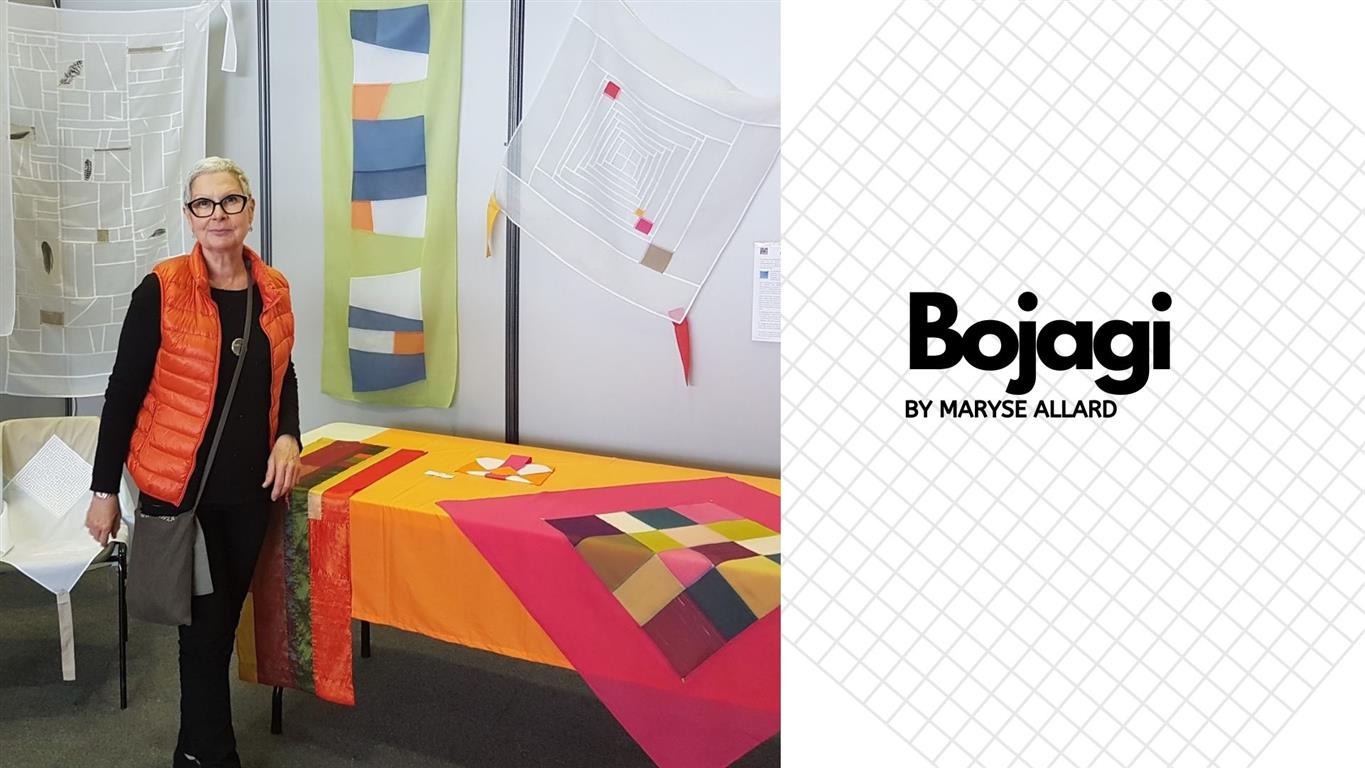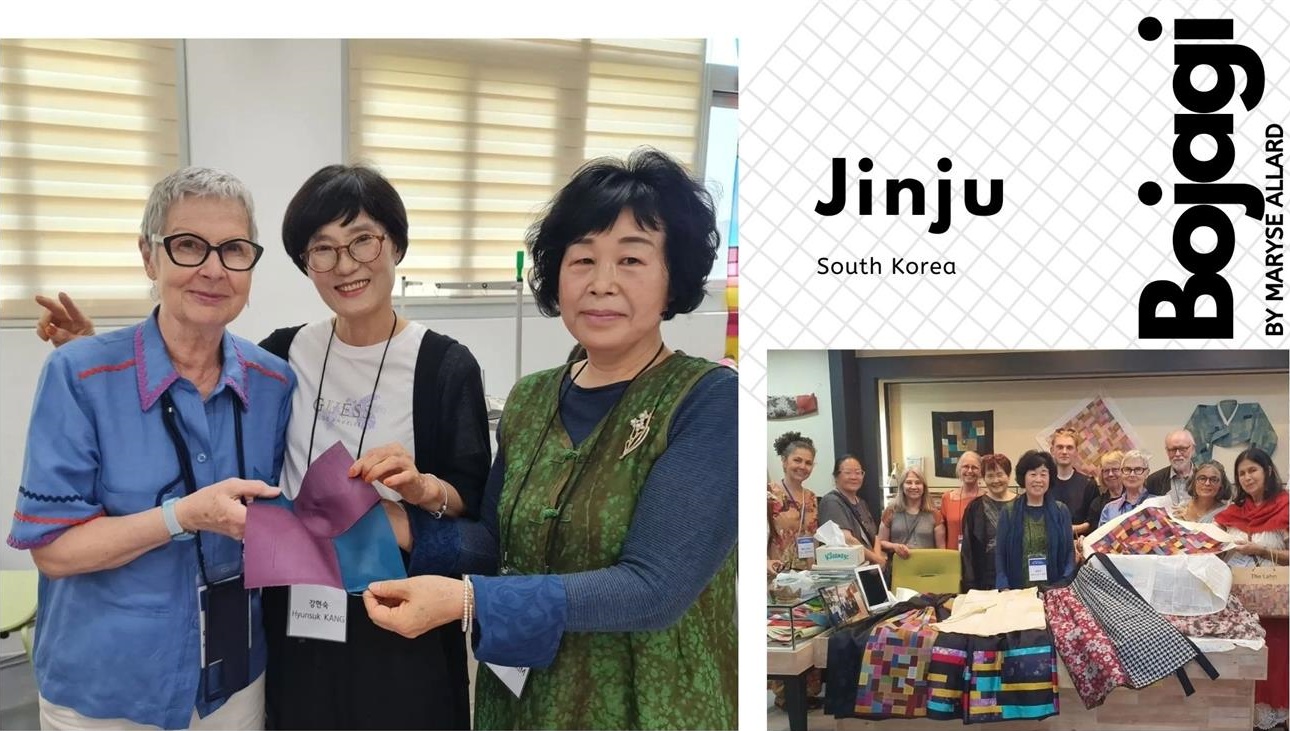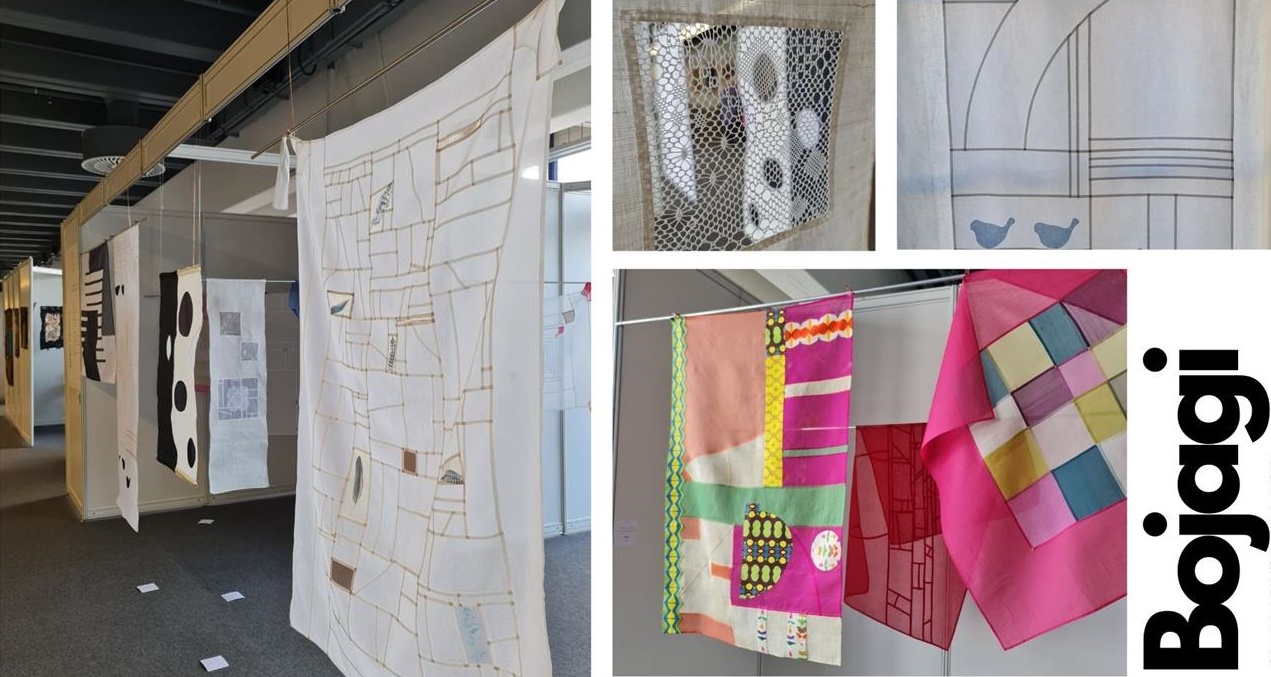- 한국어
- English
- 日本語
- 中文
- العربية
- Español
- Français
- Deutsch
- Pусский
- Tiếng Việt
- Indonesian
By Honorary Reporter Dayviana Diaz from Cuba
Photos = Maryse Allard
The traditional wrapping cloth bojagi has always inspired me with its timeless beauty. While looking at social media posts about the craft, I came across the noted French bojagi artist Maryse Allard.
After doing patchwork for a quarter of a century and with a lifelong passion for fabrics, Allard discovered bojagi in 2005 in a book by Choi Yang-sook, a master of the craft. Allard has held related workshops all over France, with her bojagi works displayed in Korea and other countries. She has also received honors from the Korea Bojagi Forum, a biennial global conference that attracts artists, textile lovers and scholars of the tradition.
Fascinated by her beautiful works, I conducted an email interview with her from July 2-26.

Maryse Allard said she discovered bojagi in 2005 after spending 25 years in patchwork art. This photo was taken in 2018.
Briefly describe your journey of becoming a bojagi artist.
I started learning crafts in the 2000s for volunteering activities at my children's schools. While looking for new ideas for teaching a class, I discovered a book on bojagi by artist Choi Yang-sook and was mesmerized by the design and technique. I taught myself to make bojagi, which changed the way I work with textiles. I've been involved in the craft for over a decade.
What difficulties have you faced in learning this craft?
I wanted to learn more about making bojagi as a Korean tradition but couldn't read most related documents because they were in Korean. I did find two books, "Couleurs des Quatre Saisons" (Colors of the Four Seasons) and "Le Royaume Ermite" (The Hermit Kingdom) from bojagi exhibitions in France and Belgium.
What are earlier works like?
My early works are closer to the original Korean style of bojagi since I was still new to the art. I made my first piece with white cotton organdy, the only fabric I could find that was transparent and easy to fold. My second "Plumes" was larger and made for my first exhibition at a 2013 festival in La Rochelle. I had many interesting experiences in creating angles and inclines and using fabrics dyed and printed by hand.

Maryse Allard (left) poses at this year's Korea Bojagi Forum in Seoul and a visiting artist residency (right) in 2018 in Jinju, Gyeongsangnam-do Province.
What are the most memorable moments you've had with this craft?
My most memorable moments were when I felt like I was representing France in the Korean bojagi artist community. I was also asked to send one of my works to the Korea Bojagi Forum in 2014 and invited in 2018 to hold a solo exhibition in Seoul. Finally, I was invited again to the forum in May this year and received the opportunity to visit an artist residency in the city of silk, Jinju, Gyeongsangnam-do Province.
What connection does your first book "Boutis de France" have with bojagi?
My friend Hubert Valeri, who makes modern boutis (Provencal quilting) suggested a collaboration in writing a book about our crafts to present at the 2015 European Patchwork Meeting in Alsace. I think this book contributed to bojagi's growing popularity in Europe, with more people asking about my workshops.
How does your book "Bojagi -- Korean Patchwork Art" differ from others?
The experience of writing this was different since it's my second book. This time, a publisher visited me at one of my exhibitions in France and asked if I could write a book about bojagi in French.
Preparing this book was a challenge as I had to work with an array of layouts, colors and skill levels. I did a lot of research on the history of bojagi and included historical information about the women who used them. I wanted French readers to be well informed about the craft because I realized how I was bridging both cultures.
How was your first visit to Korea?
I went to Korea for the first time in October 2017 on a textile tour. I found it absolutely necessary to go there because of my passion for bojagi and was surprised to see it everywhere in daily life.
I visited the National Folk Museum, Insa-dong and Bukchon Hanok Village to learn more about traditional life in Korea and Dongdaemun Market, where I saw so many fabrics such as mosi (natural ramie fiber), silk and linen.

Maryse Allard's works have been displayed in Korea and other countries including Brno, Czech Républic in April 2023 during the Quilt Show.
Where do you get your inspiration from?
I've always been fascinated by the Bauhau and Art Deco, two design movements in the same period. I'm also impressed by how modern bojagi designs are as they remind me of paintings by Piet Mondrian or Sonia Delaunay. Korean clothing, buildings and paintings gave me ideas as well.
Why do you think preserving bojagi as a foreign artist is so important?
I think it's essential to preserve a tradition whether it's from one's own country or abroad. I love learning and sharing this extraordinary art and love it when seeing people enjoying and creating new works based on it. The more we spread the beauty of bojagi, the more alive its tradition is.
msjeon22@korea.kr
*This article is written by a Korea.net Honorary Reporter. Our group of Honorary Reporters are from all around the world, and they share with Korea.net their love and passion for all things.